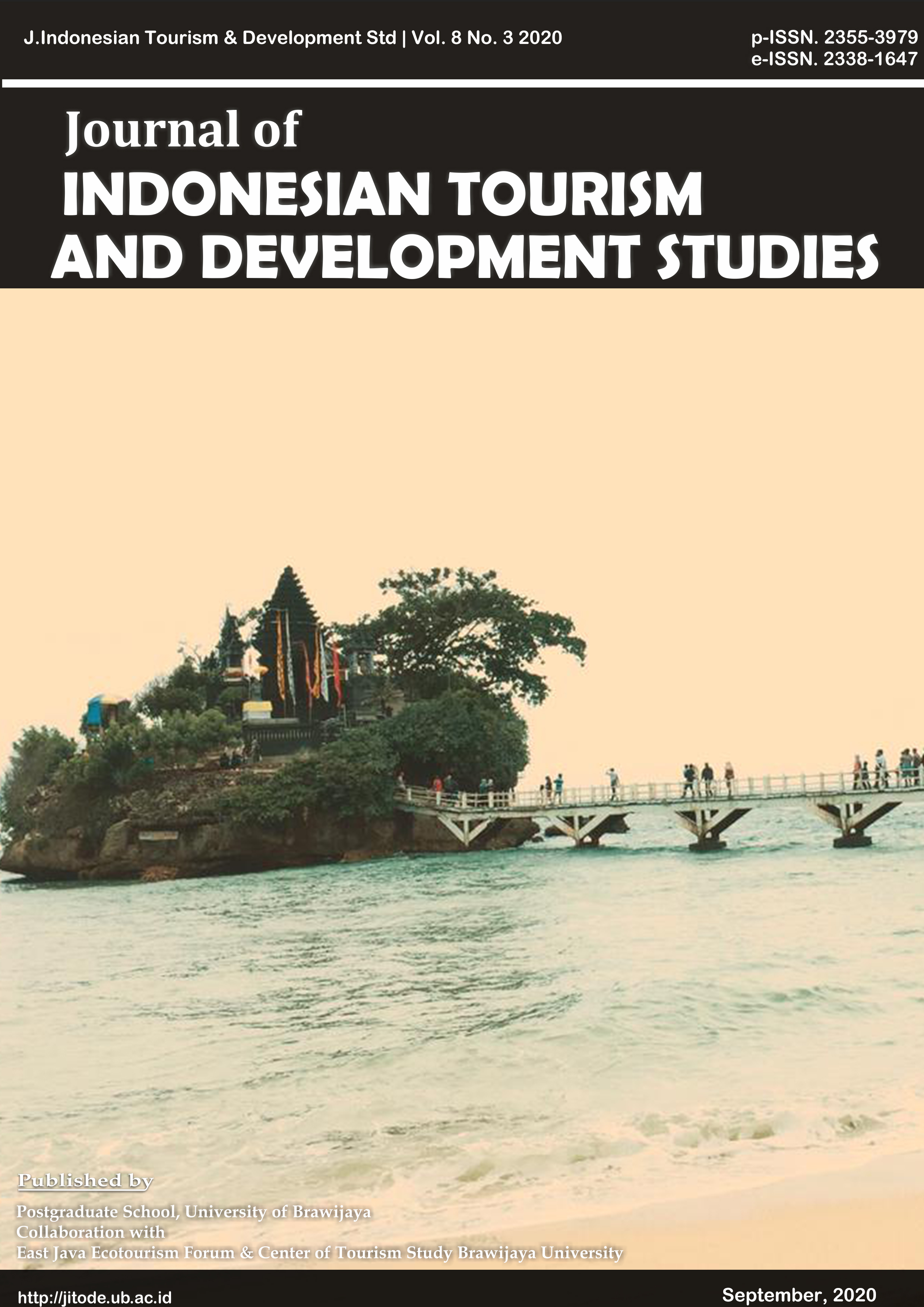Visiting Tourism Destination: Is It Influenced by Smart Tourism Technology?
DOI:
https://doi.org/10.21776/ub.jitode.2020.008.03.04Abstract
The development of technology has changed various sectors in life to be smart, including tourism. This study aims to analyze the effect of smart tourism technology attributes on visit intention and visiting tourist destinations. This study used a sample of 324 tourists in West Java Province, Indonesia. Partial Least Square is applied to test the relationship between variables. The results of the study revealed that smart tourism technology attributes such as smart information systems, smart tourism management, smart sightseeing, e-commerce systems, smart safety, smart traffic, and virtual tourism objects affect visit intention. The study also revealed the effect of visiting intentions on visits to tourist destinations. The findings of this study provide the basis for formulating strategies for implementing smart tourism technology that is appropriate in attracting tourist visits.
Keywords: Smart tourism technology, Tourism destination, Tourist behavior, Visit intention.
Downloads
Published
Issue
Section
License
Copyright (c) 2020 Journal of Indonesian Tourism and Development Studies

This work is licensed under a Creative Commons Attribution 4.0 International License.
Authors who publish with this journal agree to the following terms:- Authors retain copyright and grant the journal right of first publication with the work simultaneously licensed under a Creative Commons Attribution License that allows others to share the work with an acknowledgement of the work's authorship and initial publication in this journal.
![]()
- Authors are able to enter into separate, additional contractual arrangements for the non-exclusive distribution of the journal's published version of the work (e.g., post it to an institutional repository or publish it in a book), with an acknowledgement of its initial publication in this journal.
- Authors are permitted and encouraged to post their work online (e.g., in institutional repositories or on their website) prior to and during the submission process, as it can lead to productive exchanges, as well as earlier and greater citation of published work (See The Effect of Open Access).
Â
Â


















